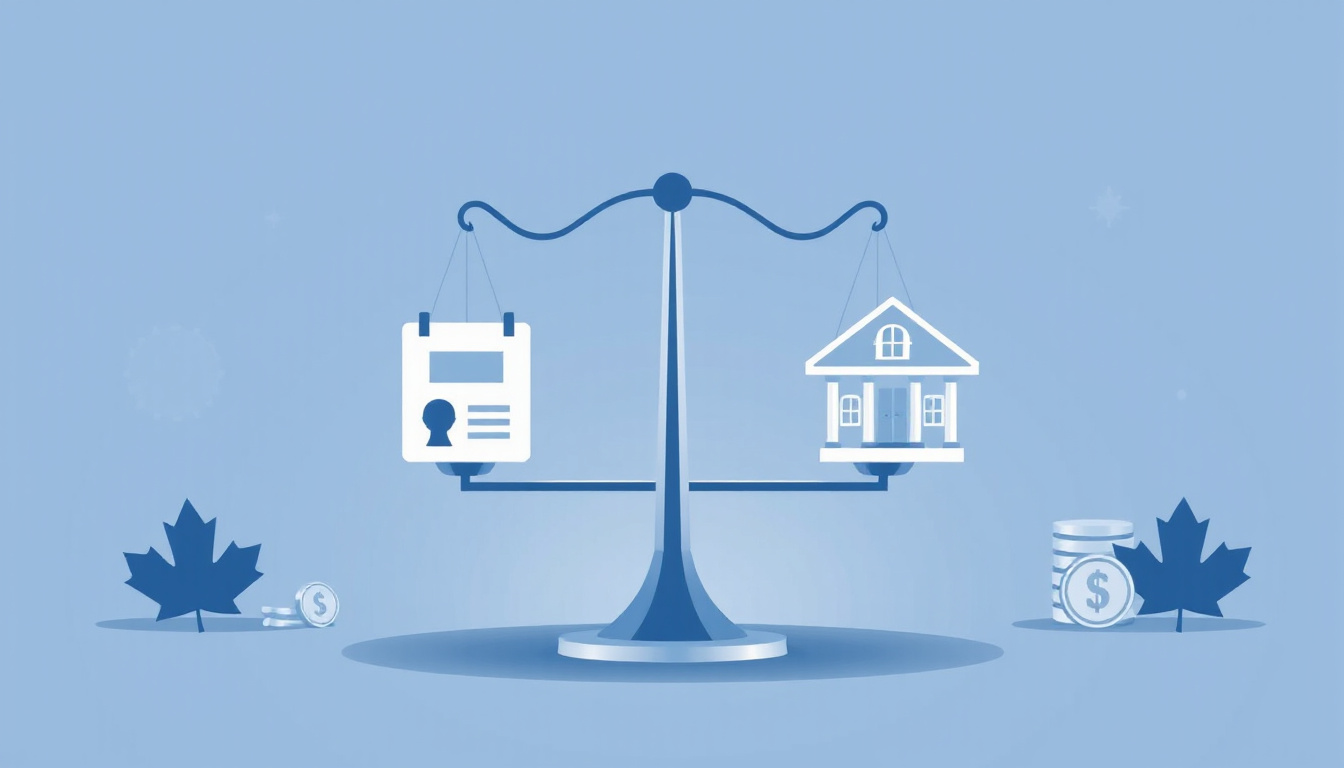In Guelph, Ontario, the debt-to-income ratio stands at approximately 37% for the average household, indicating a significant portion of income dedicated to debt obligations. This critical financial metric serves as an essential indicator of financial health, helping residents gauge their ability to manage their debts effectively.
The debt-to-income (DTI) ratio is calculated by dividing total monthly debt payments by gross monthly income, thus highlighting the relationship between what one owes and what one earns. Understanding this ratio is particularly important in Guelph, where housing costs and living expenses may challenge financial stability. A high DTI ratio can affect one’s ability to secure loans or mortgages, making it crucial for individuals and families to keep this number in check.
Improving your DTI ratio can lead to better financial opportunities. It is advisable for Guelph residents to assess their debt levels regularly and implement strategies such as budgeting, debt consolidation, or increased income to enhance their financial standing.

Key Takeaways
- The debt-to-income ratio measures the percentage of income that goes towards debt payments.
- In Guelph, maintaining a healthy debt-to-income ratio is crucial for obtaining loans and mortgages.
- To calculate your debt-to-income ratio, divide your total monthly debt payments by your monthly gross income.
- Improving your debt-to-income ratio can enhance financial stability and increase borrowing capacity.
- Strategic budgeting and reducing debt are effective ways to improve your debt-to-income ratio in Guelph.
What is the Debt-to-Income Ratio?
The debt-to-income ratio in Guelph, Ontario, stands at approximately 41% in 2023, indicating that residents allocate 41% of their gross income to servicing debt obligations. This figure is essential for assessing financial health, as a lower ratio typically suggests better economic stability. In comparison, the average debt-to-income ratio for Canada is reported at around 35%, demonstrating that Guelph’s residents are more heavily indebted relative to their income than the national average. According to the latest data from Equifax Canada, escalating housing prices and rising interest rates have contributed significantly to this high ratio. A healthy debt-to-income ratio is generally considered to be below 36%, meaning many Guelph residents may face challenges in managing their finances effectively.
Why is the Debt-to-Income Ratio Important in Guelph Ontario?
The debt-to-income ratio in Guelph, Ontario, is an essential financial metric used to assess an individual’s or household’s ability to manage debt relative to their income. In 2023, the average debt-to-income ratio for households in Guelph is approximately 36%, highlighting a concerning trend as Canadians grapple with rising living costs and interest rates. A higher debt-to-income ratio can indicate financial stress and potential difficulties in securing credit or loans. Understanding this ratio is vital for residents as it influences financial decisions, such as home buying and long-term financial planning. The Government of Canada, through resources like Statistics Canada, emphasizes the importance of maintaining a manageable debt level to ensure financial well-being.
‘An investment in knowledge pays the best interest.’ – Benjamin Franklin

How to Calculate Your Debt-to-Income Ratio
The debt-to-income ratio in Guelph, Ontario, is a critical metric that helps residents assess their financial health. As of 2023, approximately 36% of Guelph households report a debt-to-income ratio exceeding 30%, which financial experts consider a warning sign that a household may face challenges in managing its debt load effectively. To calculate your debt-to-income ratio, you first sum your monthly debt payments—which can include loans, credit card payments, and mortgages—and then divide that total by your gross monthly income. According to the Bank of Canada, maintaining a debt-to-income ratio below 30% is ideal, as it indicates a manageable level of debt compared to one’s income. Understanding this ratio can help Guelph residents make informed decisions about budgeting, spending, and saving for the future.
Tips for Improving Your Debt-to-Income Ratio in Guelph Ontario
The debt-to-income ratio in Guelph, Ontario, is a crucial indicator of financial health, with recent data suggesting that approximately 38% of households in this city carry debt relative to their income. This statistic highlights the importance of understanding and managing your debt-to-income ratio, especially given that a higher ratio can impact your ability to secure loans and mortgages. To improve your ratio, consider these tips: consolidate high-interest debts to lower monthly payments, increase your income through side jobs or new opportunities, and create a strict budget to monitor your spending effectively. Regularly reviewing your financial situation can also help identify areas where you can cut back, ultimately leading to a healthier debt-to-income ratio. For further insights, you can refer to notable sources like Equifax Canada and Statistics Canada to understand current trends in household debt.
